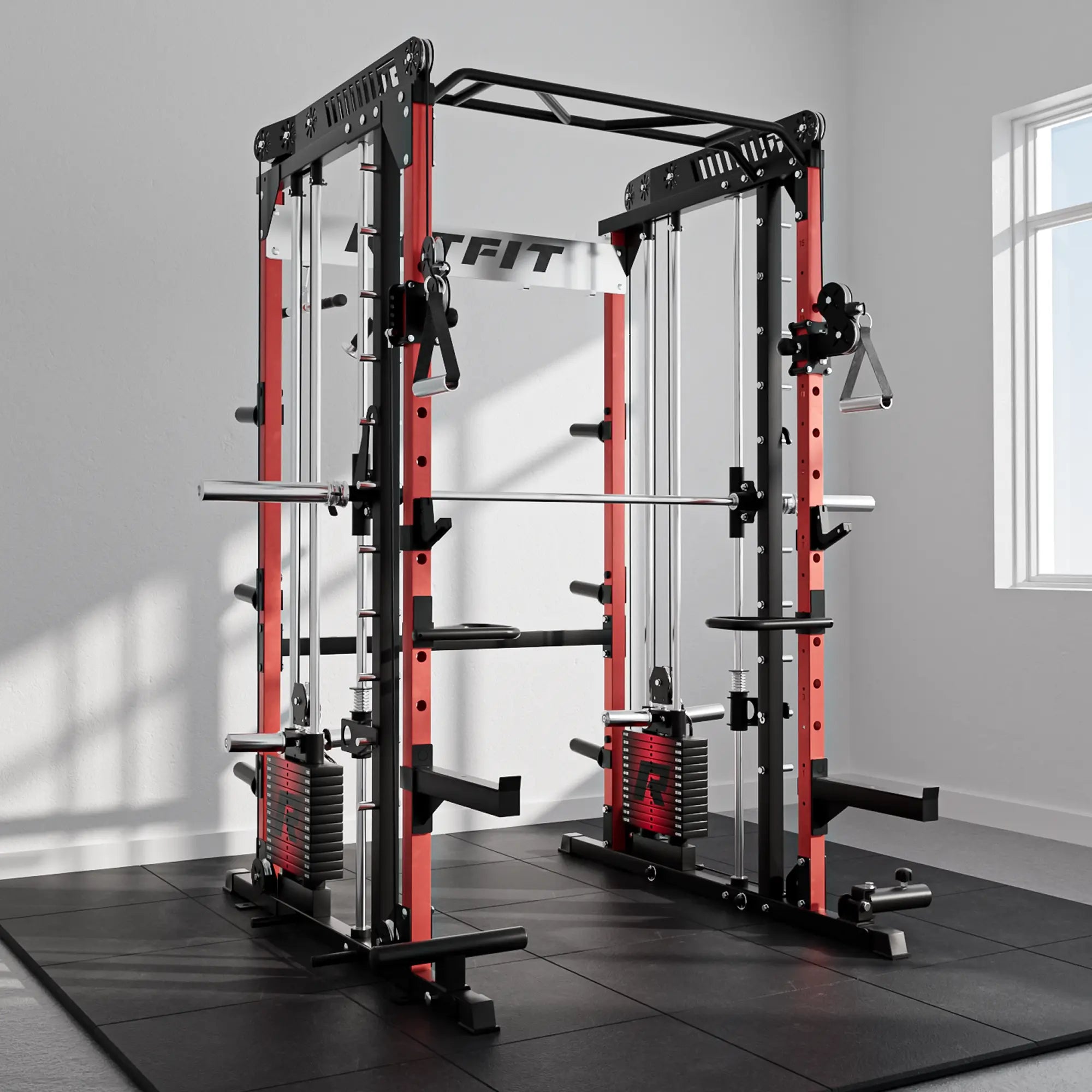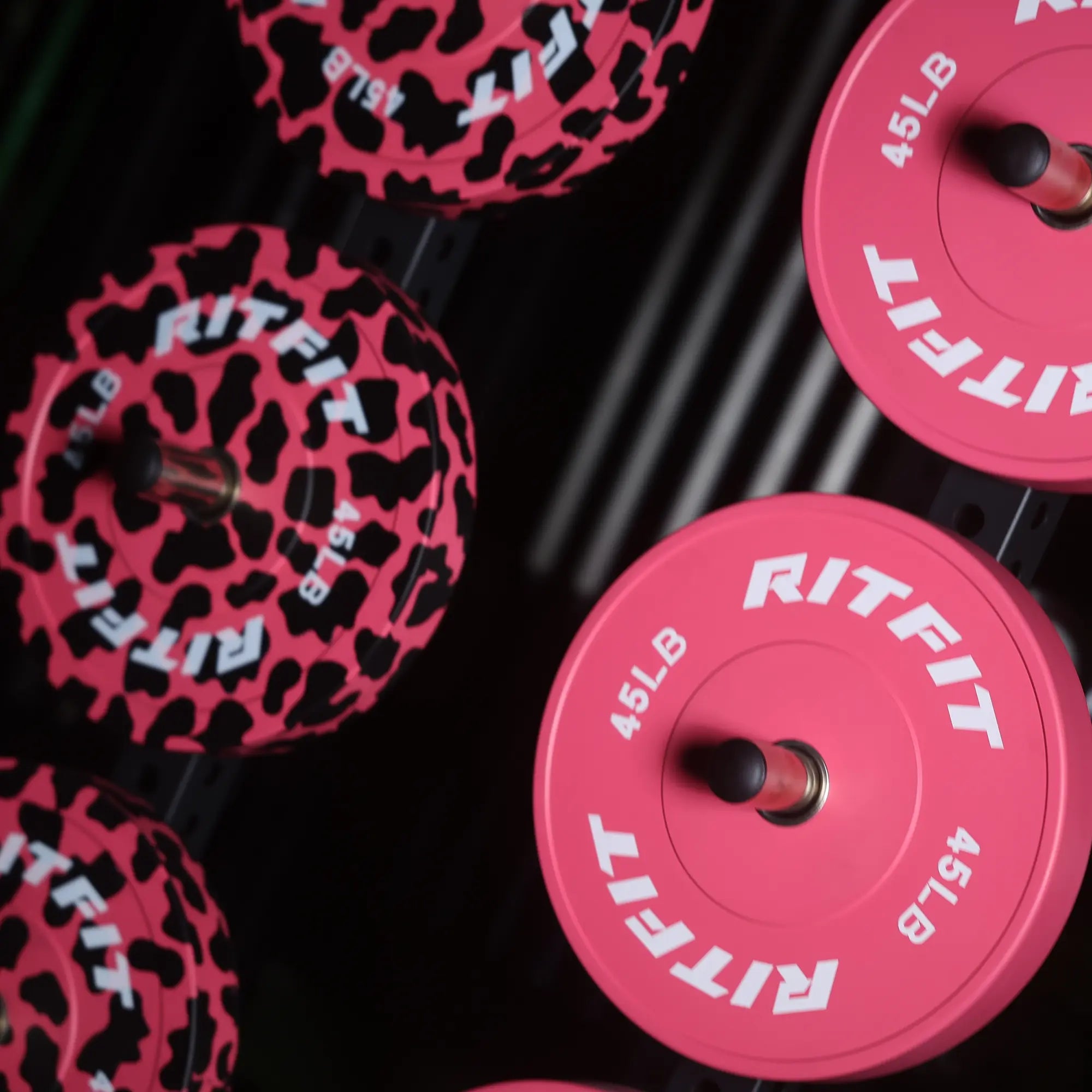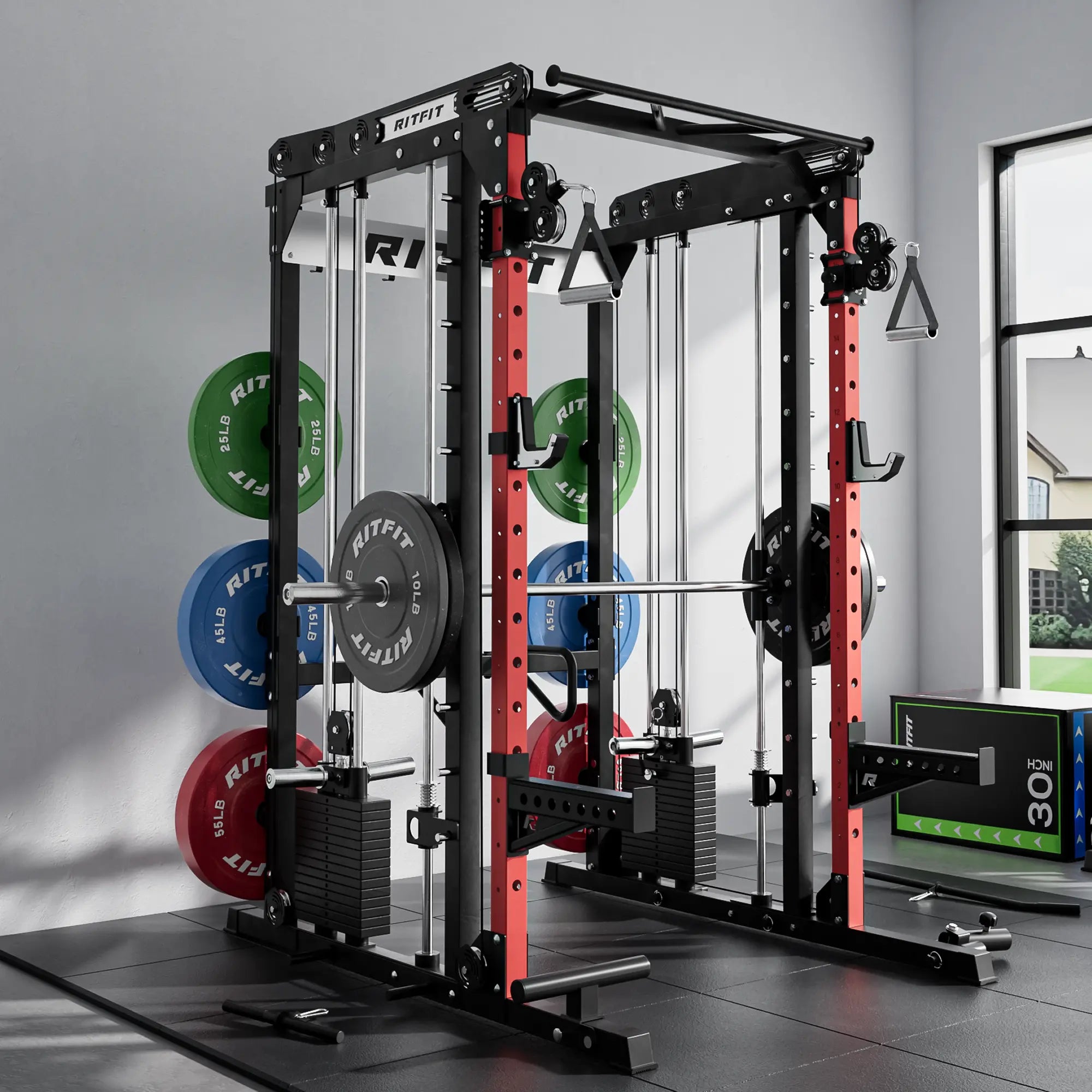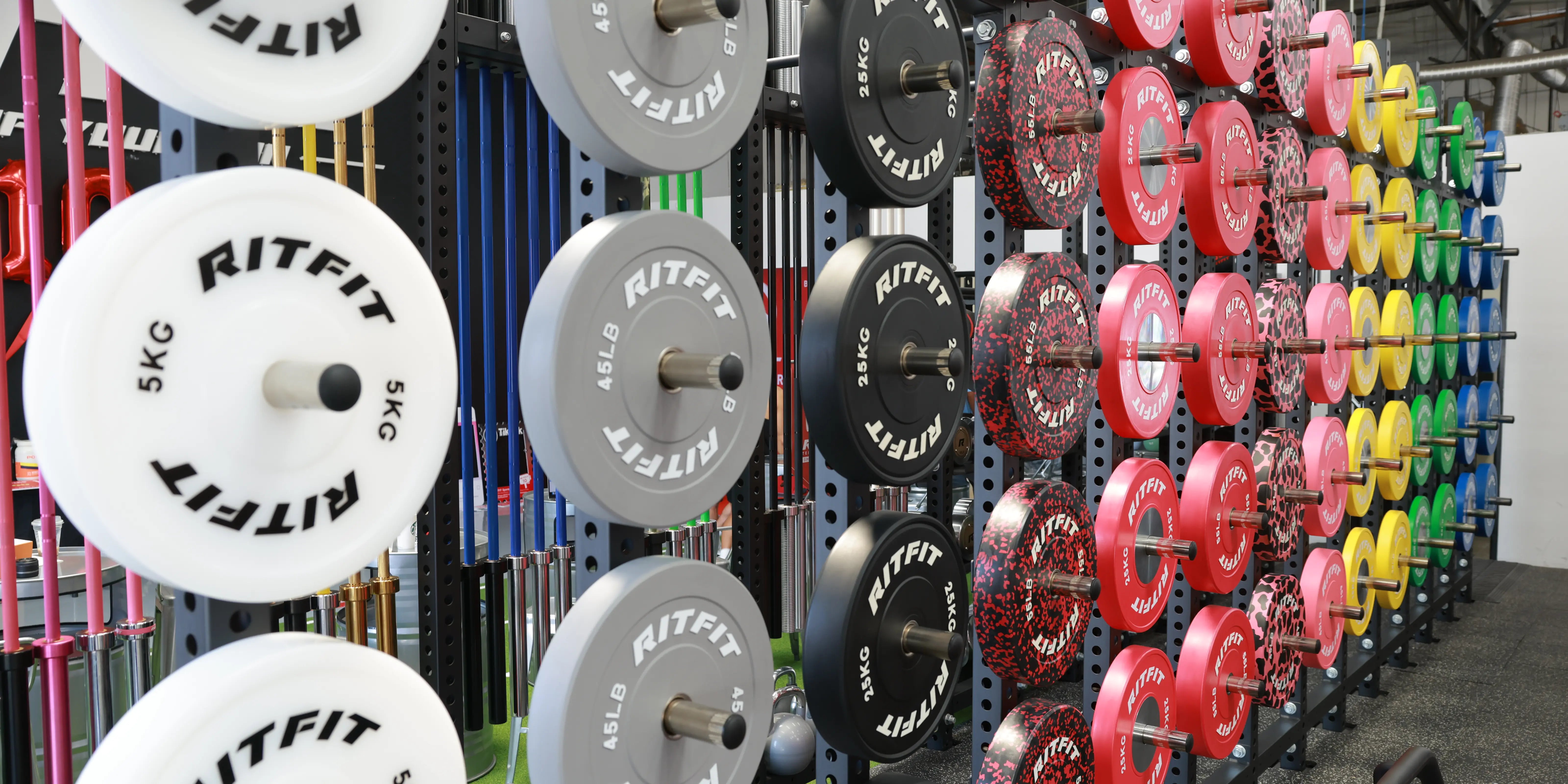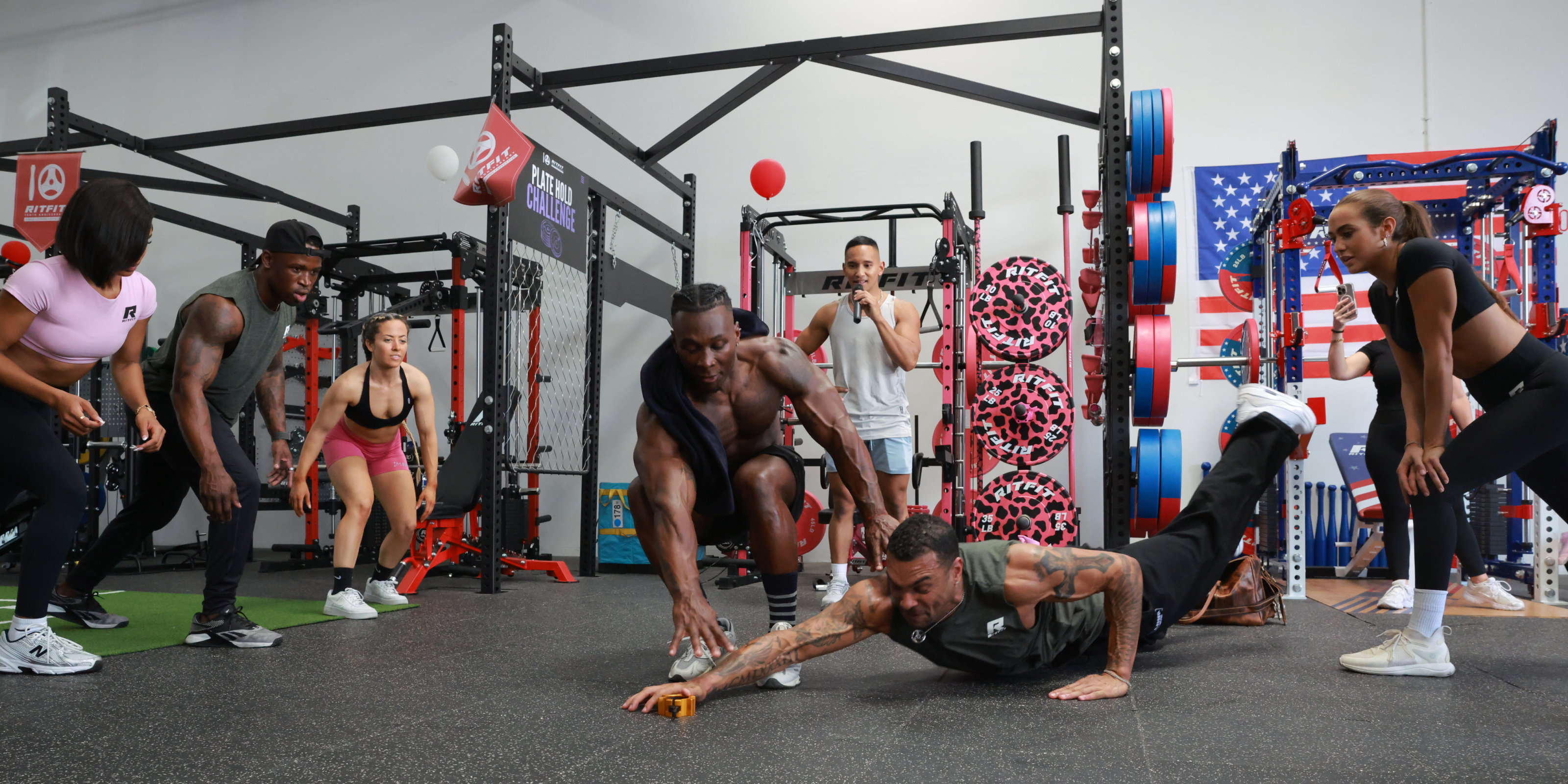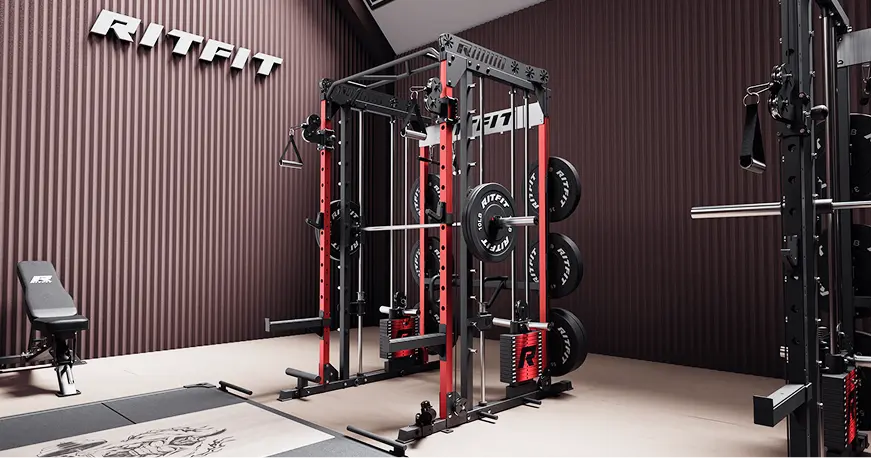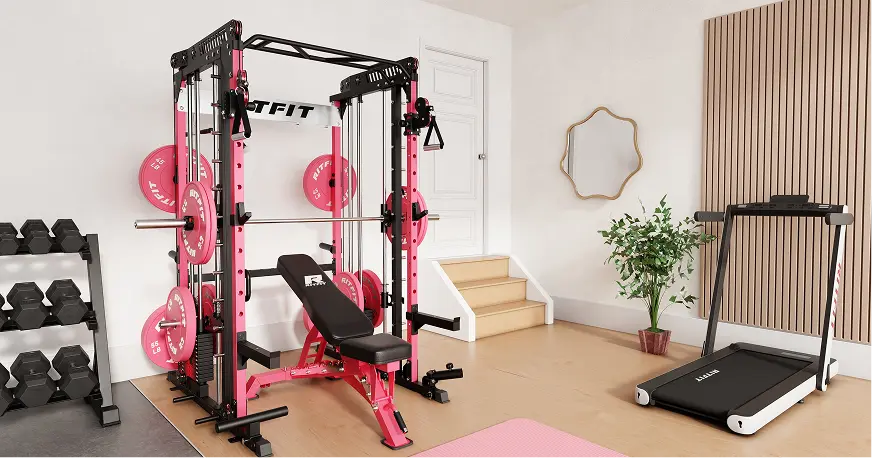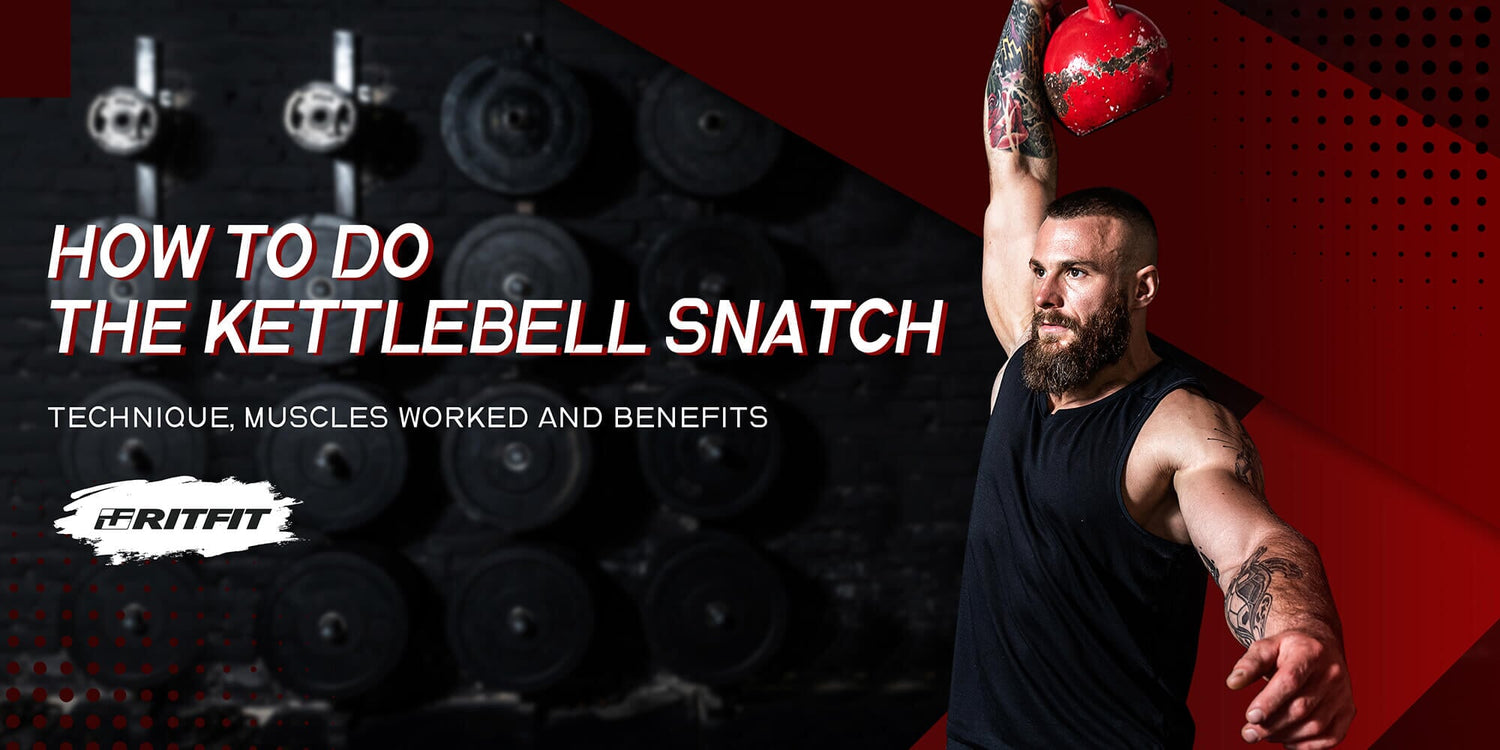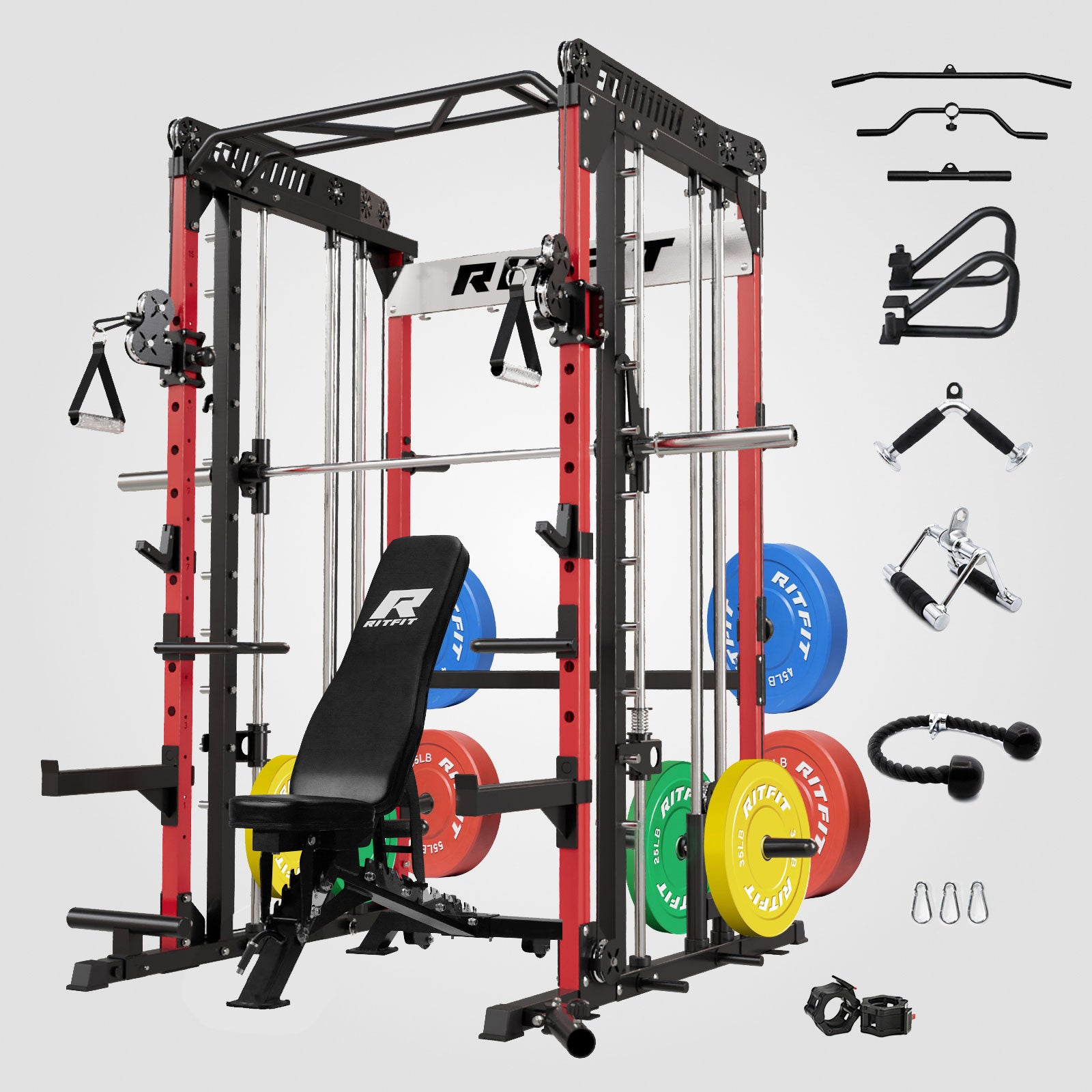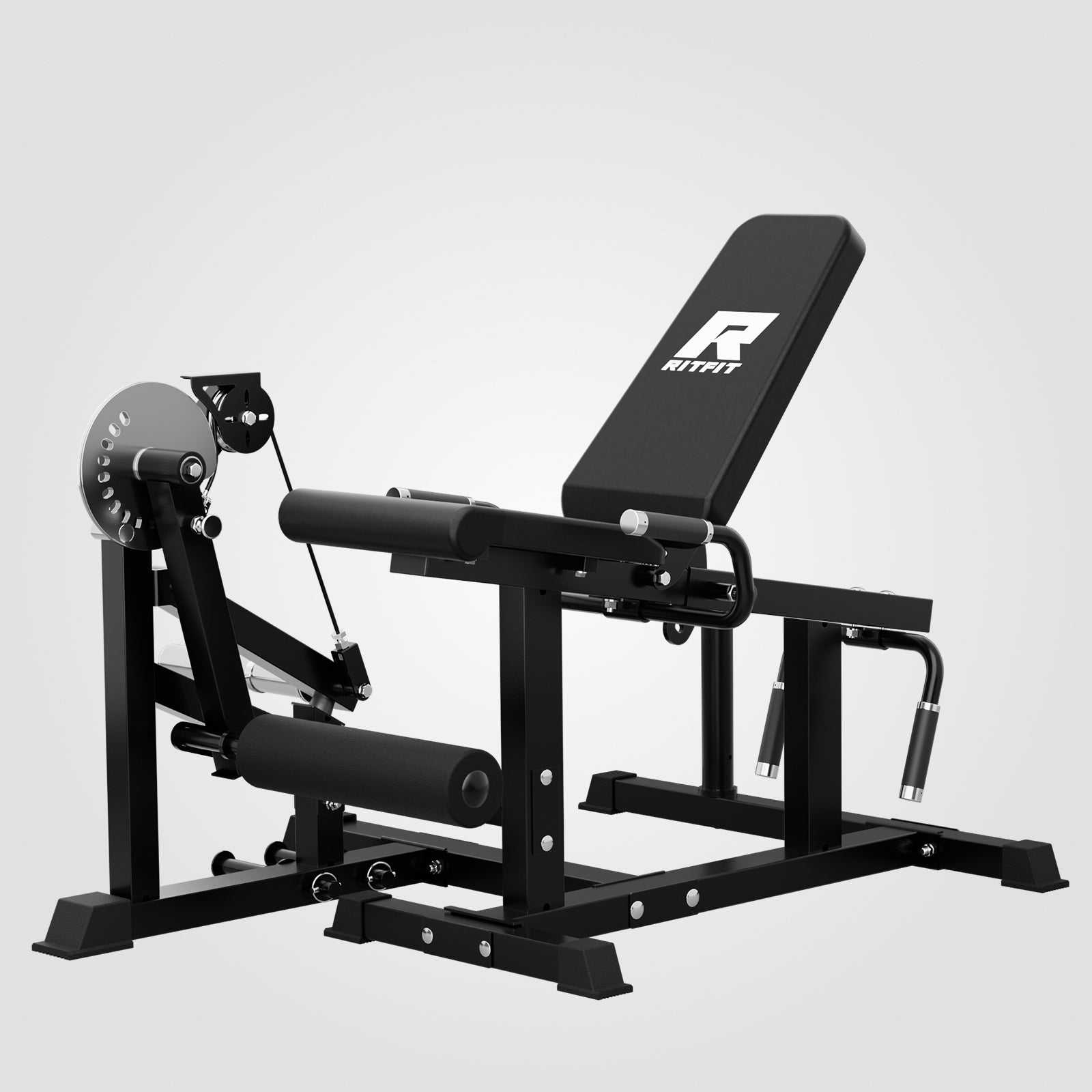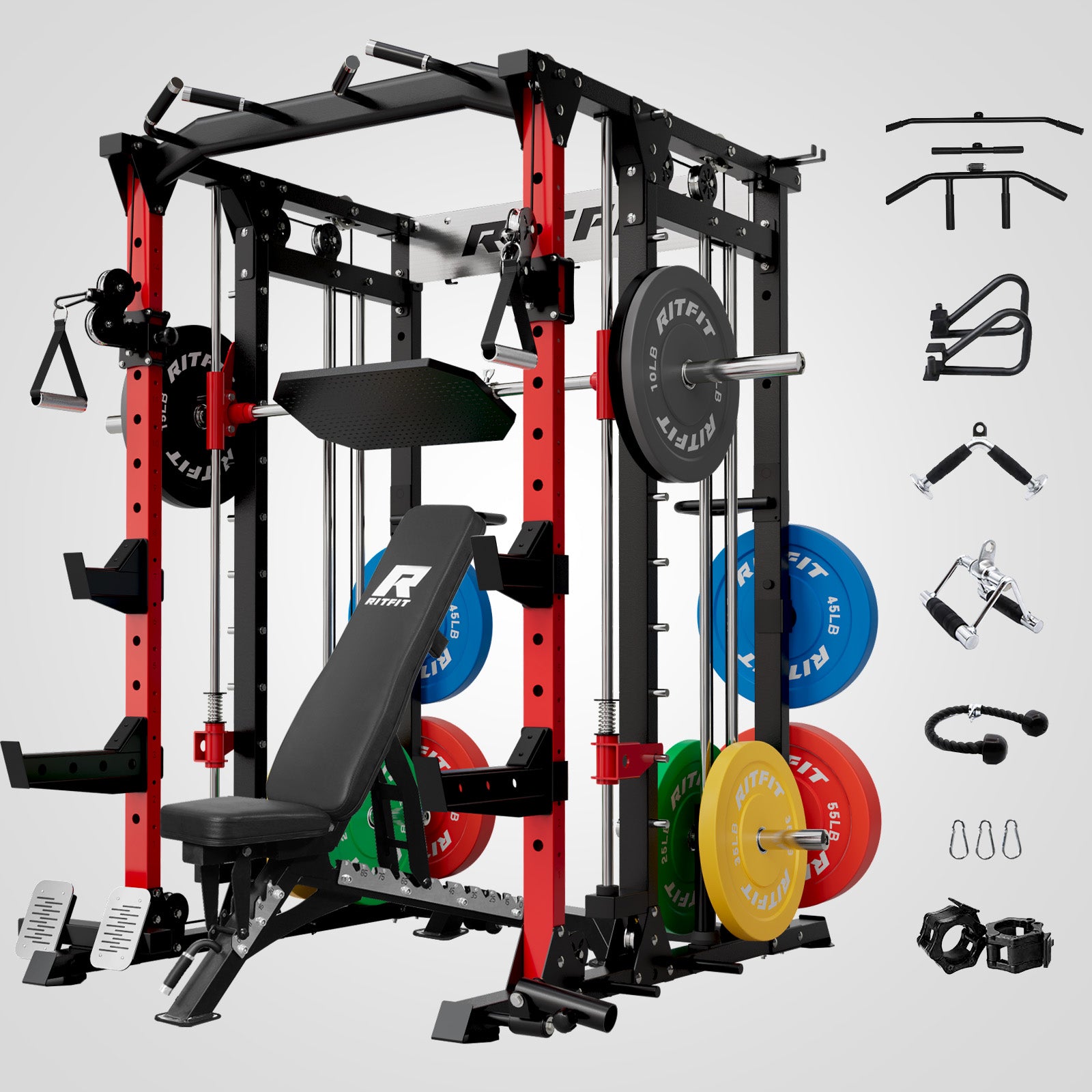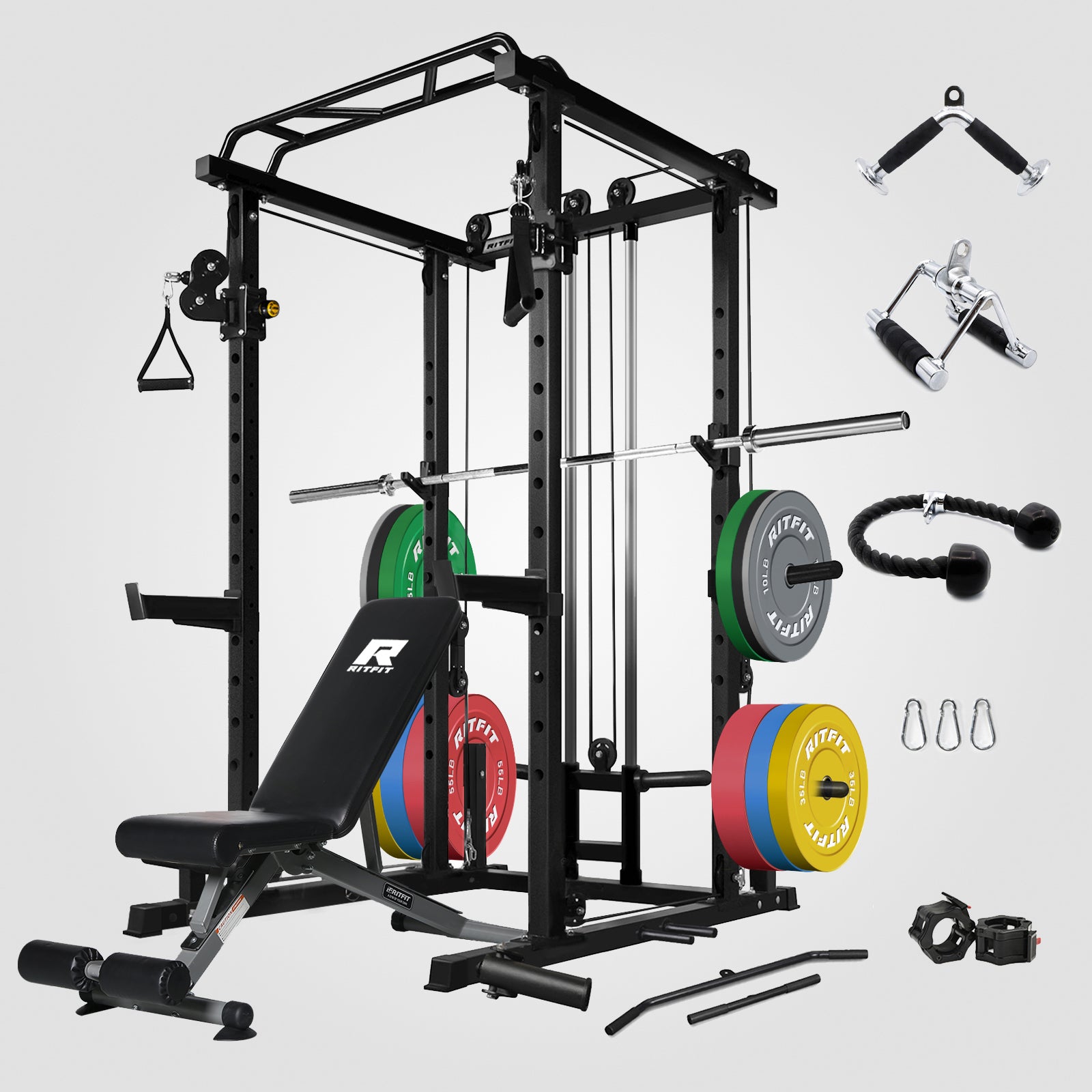Table of Contents
- What is a Kettlebell Snatch?
- Kettlebell Snatch Form and Technique
- How to Do a Kettlebell Snatch (Step by Step)
- Kettlebell Snatch Common Mistakes to Avoid
- Kettlebell Snatch Muscles Worked
- Benefits of the Kettlebell Snatch
- Kettlebell Snatch Variations
- Safety and Precautions
- Kettlebell Snatch Alternatives
- Kettlebell Snatch FAQs
You must have seen people in the gym, swinging their kettlebells effortlessly. This swinging action where you bring the kettlebell overhead and then back to the bottom is known as a kettlebell snatch. It is an advanced full-body workout that engages your entire body to build strength and endurance.
Performing this workout requires proper posture and adequate knowledge as it is a demanding lift. A slight mistake can lead to serious injury. This article will tell you everything you need to know about the kettlebell snatch including a step-by-step guide, the focused muscles, the benefits, and some frequent mistakes to avoid. So let’s dive right into it!
What is a Kettlebell Snatch?
Kettlebell snatch is a famous kettlebell lift that targets all the major muscle groups. You swing a kettlebell from between your legs to a locked-out overhead position in one smooth motion. This is a compound, hip-driven movement.
The snatch doesn't use your arms to lift the kettlebell over your head. Instead, it uses a strong hip hinge, an explosive hip extension, and a quick "punch through" at the top. People who lift weights, fight, or just want to get stronger and more fit in real life love this.
You can use the kettlebell snatch to build strength, power, or conditioning by changing the weight, number of reps, and rest periods.
Kettlebell Snatch Form and Technique
Before You Start: Requirements and Warm-Up
You should already be comfortable with these things before you learn the snatch:
- Hip hinge patterns, like Romanian deadlifts,
- Kettlebell swings, especially one-arm swings
- Lock out above your head with a dumbbell or kettlebell.
A quick warm-up can make a big difference in your safety and technique:
- 2–3 minutes of light cardio, like riding a bike, walking quickly, or jumping rope
- Dynamic work for the hips and hamstrings, like leg swings and hip circles
- Arm circles, band pull-aparts, and scapular wall slides are all good ways to get your upper body moving and active.
Do a few sets of light one-arm swings and high pulls to get the hinge and swing path ready before you try a full snatch.
How to Do a Kettlebell Snatch (Step by Step)
Use a weight that isn't too heavy for you to handle. Start with one arm at a time.
Step 1: Choose your stance and starting position.
- Put your feet about hip- to shoulder-width apart.
- Put the kettlebell on the floor in front of you, between your feet.
- Bend at the hips, keep your back flat, and hold the handle with one hand.
- Put your weight in your mid-foot and heels, with your chest up a little and your shoulders back and down.
Step 2: The Hike Pass
- As if you were "hiking" a football, pull the kettlebell back between your legs.
- Keep your arm close to your body, your ribs tight, and your spine straight.
- Your lower back should not be tense; your hamstrings and glutes should be.
Step 3: Hip Drive with a Bang
- From the backswing, snap your hips forward hard, pushing through the floor.
- Think about standing up straight quickly instead of pulling with your arm.
- Your hips should be strong enough to lift the kettlebell.
Step 4: Guide the Bell and Bend the Elbow
- As the bell travels upward, let your elbow bend and keep the kettlebell close to your body (like zipping up a jacket).
- Don’t let it swing far away from you—that pulls you off balance and slams into your forearm.
Step 5: Punch Through to Overhead Lockout
As the kettlebell passes chest level and starts to feel weightless, “punch” your hand up and through the handle.
Instead of letting the bell crash onto your forearm, this gently turns it over.
Finish in a strong position above:
- The wrist should be straight, not bent back.
- The elbow is locked but not too far back.
- Biceps close to your ear
- Ribs down, glutes tight, and legs straight
Biomechanist Stuart McGill notes that the overhead lockout improves shoulder stability by recruiting the rotator cuff to center the humeral head[1].
Step 6: The Back and Down Swing
- Pull the kettlebell slightly forward and down from the top, but keep your shoulder tight.
- Let it spin around your hand, then bring it back to a hinge and backswing between your legs.
- Change your position after each rep, or keep doing reps until your form is good.
Key Coaching Cue: Drive the bell with your hips, keep it close to your body, and let the hand “punch through” at the top. If the bell is slamming your forearm, you’re not guiding or rotating it early enough.
Breathing Pattern
Good breathing makes the snatch feel safer, smoother, and stronger:
- Inhale as the kettlebell swings back between your legs.
- Forcefully exhale as you snap your hips and punch to the overhead position.
- Take a calm breath at the top if you’re doing slower reps, then exhale again as you guide it down.
Avoid holding your breath through the whole rep—that spikes blood pressure and makes you fatigue faster, especially in high-rep sets.
Kettlebell Snatch Common Mistakes to Avoid
Keeping the Arms Straight
Unlike most exercises that require trainers to keep their arms straight throughout the session, the snatch requires you to bend it at a 90 degrees angle. Not bending the arms at the right time can lead to serious injury as this puts excessive and unnecessary pressure on the wrist and forearms.
The Grip is Too Tight
Kettlebell is heavy and that inclines weightlifters to hold them as tightly as possible so that it doesn't slip. This can get rough for your arms and slow you down. It is a good idea to first master the right grip and then start with the workout. Try to practice your hook grip until it feels natural.
Swinging Slow
Lifters often start with slow movement to build momentum. However, keeping the movement slow can hinder the smooth swing and act as a resisting force. Punch confidently and quickly to ensure the swing is perfect.
Holding Breath
People often hold their breath while doing this workout thinking that it is the right way to do it. There are three breaths per rep and doing so helps you manage the exercise better. Inhale and exhale at least once when the kettlebell is overhead and when you are in the starting position.
Kettlebell Snatch Muscles Worked
Glutes
The glutes are a group of 3 muscles that makes up the buttocks. It is widely used in most weightlifting exercises. This variant of snatch also puts pressure on the glutes for efficient performance, especially when going down and swinging the weights.
The snatch elicits high levels of gluteus maximus activation to generate the explosive force needed to elevate the bell[2].
Back
Another major muscle group targeted by this exercise is the back muscles. Since they are the focal point of the exercise, your lower back becomes both strong and flexible as a result.
Shoulders
The shoulder muscles are used to pull the weights up. These muscles are highly focused in a snatch workout and also help in stabilizing the weights when it is over the head.
Triceps
The triceps and wrist keep the weights closest to them and that’s why they are probably the most worked-out tissues in this exercise. The arms are engaged to keep the kettlebell in control.
Benefits of the Kettlebell Snatch
- Cardiorespiratory fitness: The mix of lifting and cardio helps build cardiorespiratory fitness.An ACE-sponsored study revealed that performing kettlebell snatches burns approximately 20.2 calories per minute, equivalent to a 6-minute mile pace[3].
- Improves stability and mobility: KB snatch requires balance and smooth movement that helps build overall stability.
- Builds strength: It develops the ability to build force fast and quickly that in turn leads to the increased power of the lifter.
Kettlebell Snatch Variations
Double Kettlebell Snatch
The double snatch is a highly advanced exercise and doing it before practicing complete control over kettlebell movement is foolish. Since you have weights in both arms, this leaves zero room for error as consequences could be severe. The stance is similar to the regular snatch but the trainer holds both kettlebells between the legs. The motion resembles the conventional snatch as well. However, for effective performance, both hands should move at the same time.
Single Arm Kettlebell Snatch
Before moving to the double snatch, lifters perfect the single-arm snatch first. Regardless, this variant also requires a good understanding of the one-handed swing technique. Projecting force upwards is an important component of this full-body workout. According to a study published in the JSCR, this leads to improved cardiovascular and metabolic effects.
Kettlebell Half Snatch
Half snatch is an excellent starting point for people who want to incorporate KB snatch into their workout routine. As the name suggests, it is an easier variant of the regular snatch which requires less power and control. The main difference between a half snatch and a regular snatch is that in the half snatch, the lifter does not swing the weights down in a smooth momentum. Rather they bring it down to shoulder height, also known as the rack position, and then swing it back down to initiate the next half snatch.
Kettlebell Split Snatch
The split snatch is another advanced variant that combines lifting with aerobics to offer a full-body workout. When performing a kettlebell split snatch, start with a regular stance and body position. Next, as you raise the kettlebell, thrust the leg that is holding the kettlebell forward and the other leg backward into a lunge position. Bend beneath the kettlebell by using hip flexion. Then hop back into the starting position as you smoothly return the kettlebell to the ground. Now start the next rep.
Safety and Precautions
The kettlebell snatch is powerful and fun, but it isn’t the first lift beginners should jump into.
- Do not learn the snatch before you master basic hip hinges and kettlebell swings.
- Start with light to moderate weights until your technique feels automatic.
- If you have a history of shoulder, elbow, wrist, spinal, or cardiovascular issues, talk with a healthcare professional before adding heavy or high-rep snatch work.
- Stop the set if you feel sharp pain, dizziness, or if the kettlebell starts slamming your forearm or pulling you off balance.
- Practicing the movement pattern with no weight or a very light bell in front of a mirror is a smart way to refine your form before going heavier or faster.
Kettlebell Snatch Alternatives
Kettlebell High-Pull
The alternative is for intermediate lifters that focus on similar muscle groups such as shoulders, quadriceps, and gluteus. It also requires a similar level of body coordination, making it a great alternative.
Barbell Hip Thrust
Another alternative is barbell hip thrust. Even though it does not involve a swing, it helps in strengthening the glutes. It is also relatively simpler, making it an ideal alternative for beginners who have not yet built their fitness for a snatch or have smooth momentum.
Kettlebell Snatch FAQs
The snatch is a rather difficult exercise. So, you must only try it out after you have mastered other basic strength training routines. It is preferred by people wanting to increase power along with mobility.
It can be done by beginners, but only when a trainer is present to supervise them. Maintaining the proper posture is essential since the benefits depend on it.
Weightlifters do include snatches of some kind in their workout routine. It is an exercise that helps with body coordination while assisting in building muscle mass.
It is a good blend of cardio and strength training and that’s why it is preferred by people interested in either workout.
What Body Part Should I Focus on During a Kettlebell Snatch?
During a kettlebell snatch, you should focus on several body parts to perform the exercise correctly and safely. It images several major muscle groups as it requires coordination and balance. Following are the primary muscles you should work on:
- Hips - Glutes generate power to lift the kettlebell and push it overhead. It should be further involved to maintain momentum for the swing.
- Core Muscles - The abs and lower should be engaged the entire time as they balance the body and keep your position intact.
- Legs - maintaining lower body balance is crucial in this workout and that’s why using your legs properly to stabilize is a major part of this workout.
Apart from these primary muscle groups, the KB snatch uses almost all other muscles and that’s why it is a head-to-toe workout.
How Often Should I Do Kettlebell Snatches?
Frequency depends on your training age and goals:
- Beginners: 1–2 sessions per week, not on back-to-back days.
- Intermediate/Advanced lifters: 2–3 sessions per week, adjusted based on overall training load.
Always prioritize quality over quantity—if technique breaks down, reduce the volume or load.
How Many Reps And Sets Should I Do For the Kettlebell Snatch?
The answer to this question depends on your workout goals and how experienced you are.
- Those who are looking for a cardio finisher should try to perform eight reps per side with light weights.
- People who want to build body strength should do four to six reps per side with heavy weights.
Increasing the reps will not necessarily bring added benefits as it can lead to the breakdown of form and potential injury. Do only as many as you can do accurately.
You can perform three to six sets depending on the weights and workout goals.
- If you are interested in a cardio workout and want to lift weights as part of it then you should do 3 sets of light weights.
- Experienced people with a focus on weightlifting should do 3 to 4 sets of heavy weights.
The sets and reps are interdependent. So, balancing them is crucial. If at any point you think the workout is becoming too easy and you can do more than that, go for it.
How to Add the Kettlebell Snatch To My Routine?
You can plug the snatch into your training in several ways:
- As a power primer near the start of your workout (low reps, heavier bell, full rest).
- As a conditioning finisher at the end of a strength session (lighter bell, EMOM or intervals).
- In a circuit with other full-body movements, as long as your form stays sharp.
Start small—1–2 focused blocks per week—then gradually increase volume or intensity as your technique and conditioning improve.
How Do I Progress with the Kettlebell Snatch?
A simple progression roadmap:
- Learn the hinge and two-hand swing.
- Master one-arm swings and high pulls.
- Practice half snatches with light weight.
- Move to full single-arm snatches, focusing on smooth turnover and soft lockout.
- Increase load or volume slowly, not both at the same time.
- Once highly comfortable and consistent, experiment with double or split snatches if they fit your goals.
Slow, consistent progression beats rushing to heavy bells with sloppy form every time.
Summary
The kettlebell snatch is a demanding but highly rewarding lift. Done correctly, it builds full-body strength, explosive hip power, serious conditioning, and rock-solid shoulder and core stability—all with a single piece of equipment.
Use this guide to:
- Dial in safe, efficient technique
- Avoid the most common mistakes
- Choose the right variations and alternatives for your level
- Program snatches intelligently into your weekly training
Now that you understand the “why” and the “how,” grab a sensible weight, respect the learning curve, and start building smooth, powerful kettlebell snatches one rep at a time.
References
- McGill SM, Marshall LW. Kettlebell swing, snatch, and bottoms-up carry: back and hip muscle activation, motion, and low back loads. J Strength Cond Res. 2012;26(1):16-27. doi:10.1519/JSC.0b013e31823a4063
- Krzysztofik M, Wilk M, Wojdała G, Gołaś A. Maximizing Muscle Hypertrophy: A Systematic Review of Advanced Resistance Training Techniques and Methods. Int J Environ Res Public Health. 2019;16(24):4897. Published 2019 Dec 4. doi:10.3390/ijerph16244897
-
Farrar RE, Mayhew JL, Koch AJ. Oxygen cost of kettlebell swings. J Strength Cond Res. 2010;24(4):1034-1036. doi:10.1519/JSC.0b013e3181d15516

